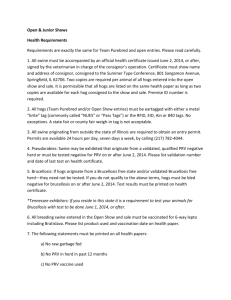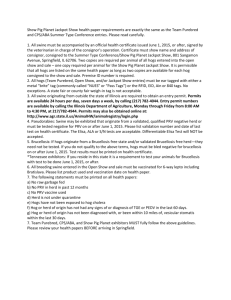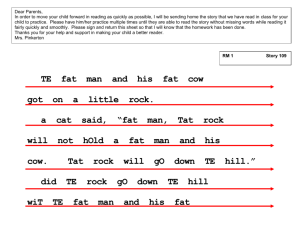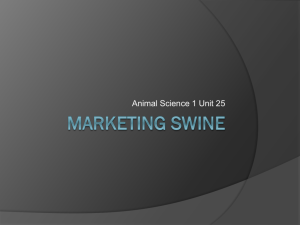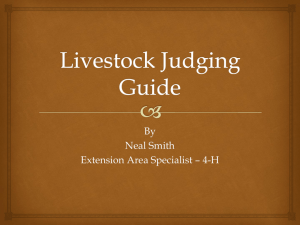Swine Handbook Evaluation Of Market Hogs
advertisement
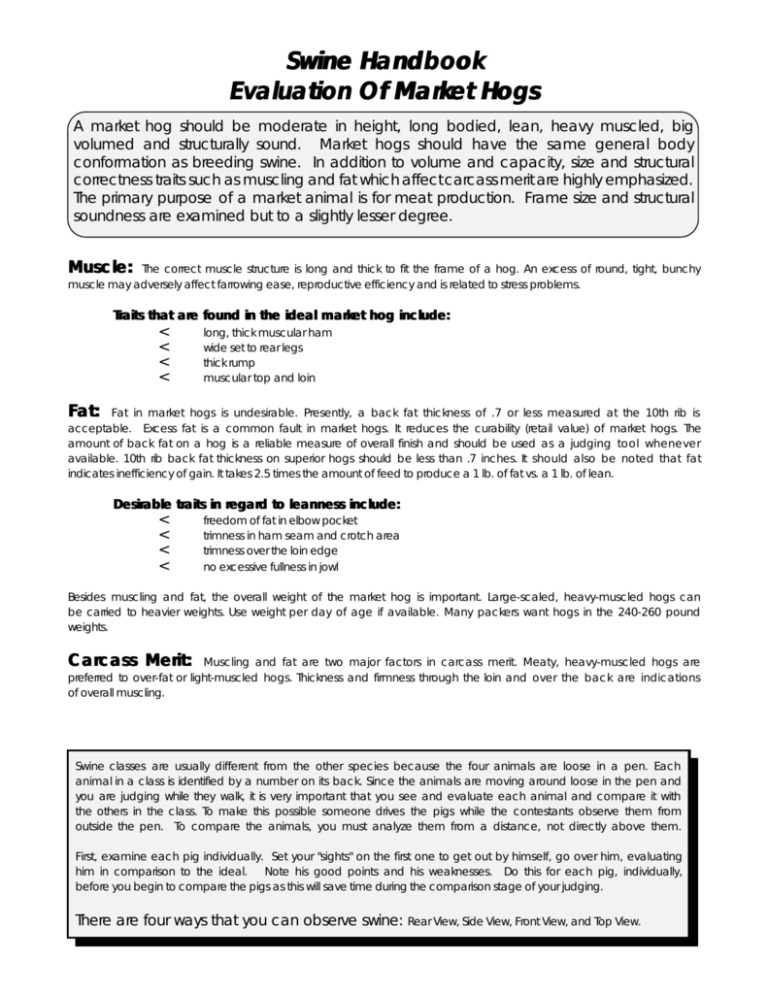
Swine Handbook Evaluation Of Market Hogs A market hog should be moderate in height, long bodied, lean, heavy muscled, big volumed and structurally sound. Market hogs should have the same general body conformation as breeding swine. In addition to volume and capacity, size and structural correctness traits such as muscling and fat which affect carcass merit are highly emphasized. The primary purpose of a market animal is for meat production. Frame size and structural soundness are examined but to a slightly lesser degree. Muscle: The correct muscle structure is long and thick to fit the frame of a hog. An excess of round, tight, bunchy muscle may adversely affect farrowing ease, reproductive efficiency and is related to stress problems. Traits that are found in the ideal market hog include: < < < < long, thick muscular ham wide set to rear legs thick rump muscular top and loin Fat: Fat in market hogs is undesirable. Presently, a back fat thickness of .7 or less measured at the 10th rib is acceptable. Excess fat is a common fault in market hogs. It reduces the curability (retail value) of market hogs. The amount of back fat on a hog is a reliable measure of overall finish and should be used as a judging tool whenever available. 10th rib back fat thickness on superior hogs should be less than .7 inches. It should also be noted that fat indicates inefficiency of gain. It takes 2.5 times the amount of feed to produce a 1 lb. of fat vs. a 1 lb. of lean. Desirable traits in regard to leanness include: < < < < freedom of fat in elbow pocket trimness in ham seam and crotch area trimness over the loin edge no excessive fullness in jowl Besides muscling and fat, the overall weight of the market hog is important. Large-scaled, heavy-muscled hogs can be carried to heavier weights. Use weight per day of age if available. Many packers want hogs in the 240-260 pound weights. Carcass Merit: Muscling and fat are two major factors in carcass merit. Meaty, heavy-muscled hogs are preferred to over-fat or light-muscled hogs. Thickness and firmness through the loin and over the back are indications of overall muscling. Swine classes are usually different from the other species because the four animals are loose in a pen. Each animal in a class is identified by a number on its back. Since the animals are moving around loose in the pen and you are judging while they walk, it is very important that you see and evaluate each animal and compare it with the others in the class. To make this possible someone drives the pigs while the contestants observe them from outside the pen. To compare the animals, you must analyze them from a distance, not directly above them. First, examine each pig individually. Set your "sights" on the first one to get out by himself, go over him, evaluating him in comparison to the ideal. Note his good points and his weaknesses. Do this for each pig, individually, before you begin to compare the pigs as this will save time during the comparison stage of your judging. There are four ways that you can observe swine: Rear View, Side View, Front View, and Top View.


